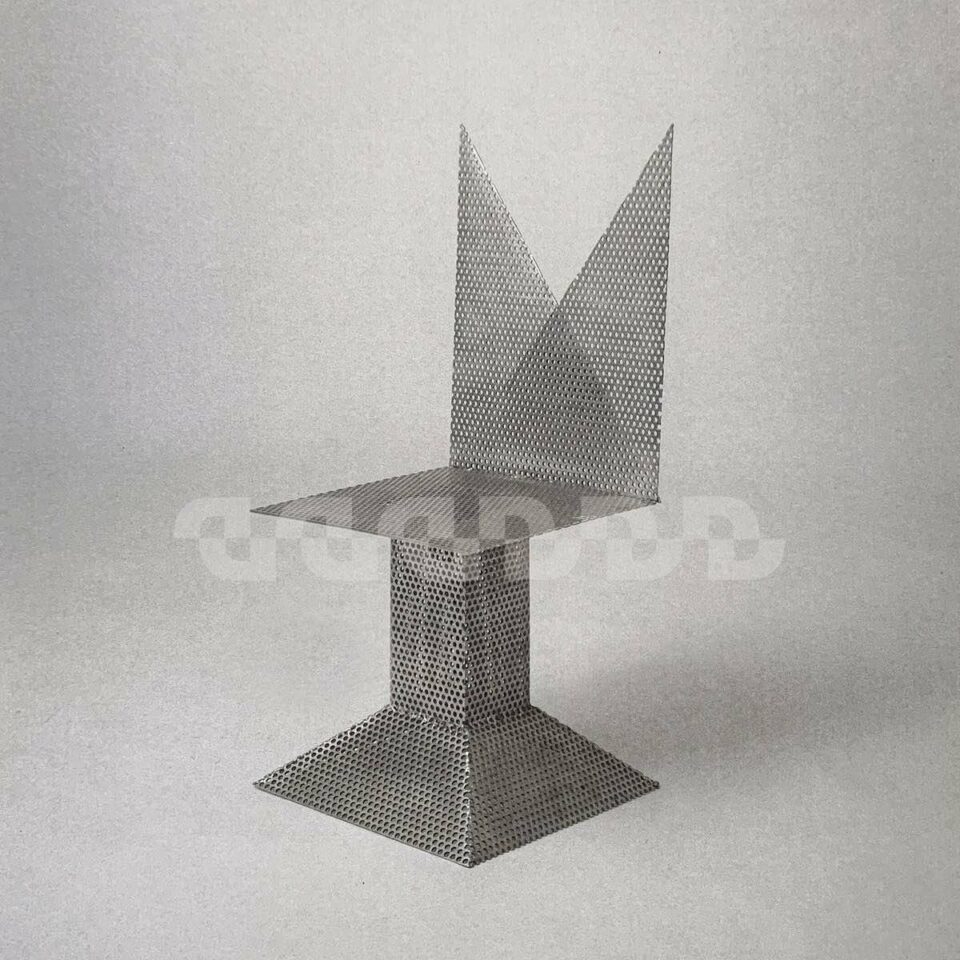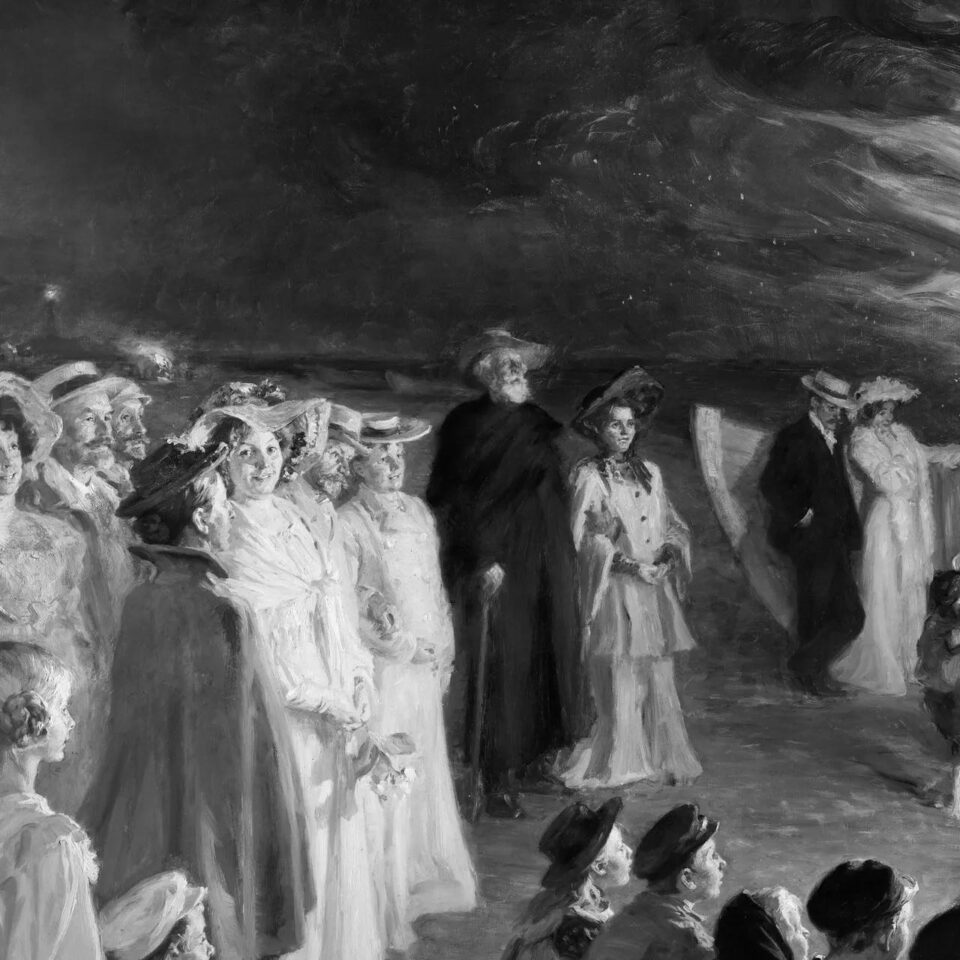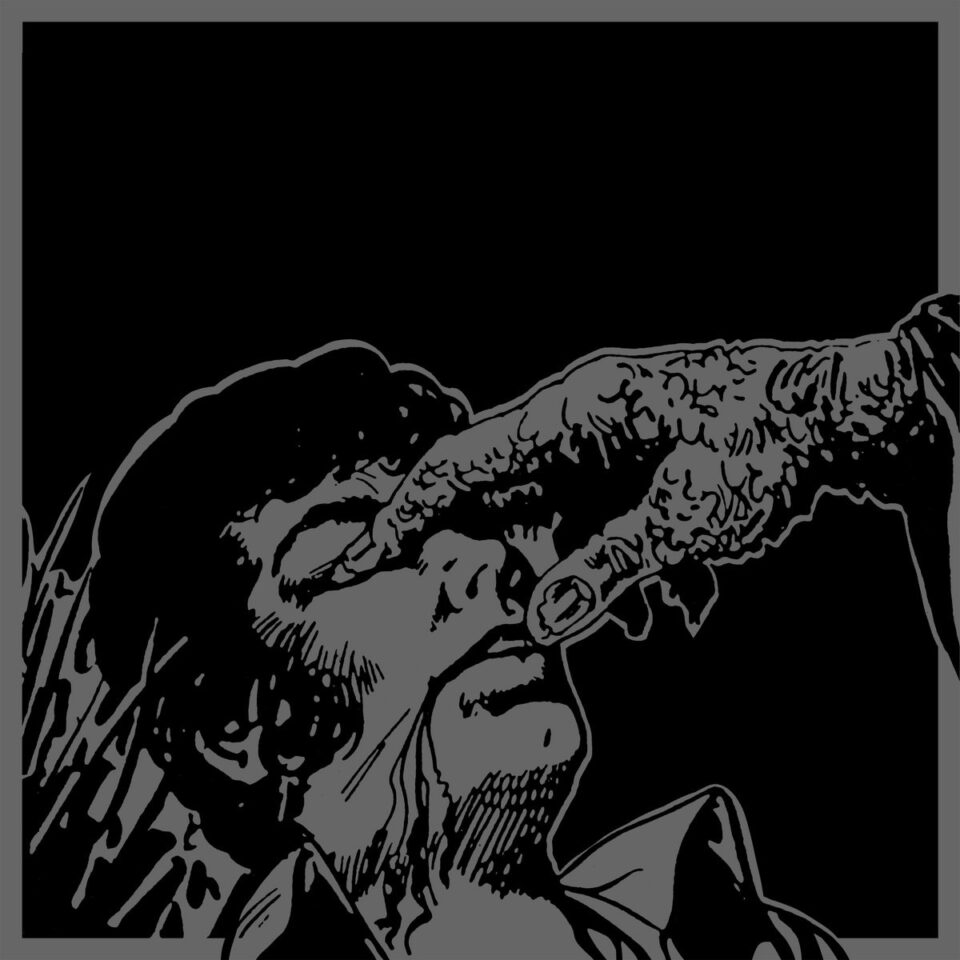AOKOHIO is WHY?’s most conceptually daring album to date. The Cincinnati-based project of Yoni Wolf and friends (family, too) has always dared to push rap, pop, and folk music into a shareable ecosystem, with a sound at its best when border lines dissolve into the rhythmic pulse. AOK isn’t too far from some of WHY?’s earliest music, but it’s a sharp departure from the crystalline pop tunes they’ve perfected on full-band albums like Alopecia and Moh Llean. The stark contrast between this one and anything the band has done before lies in the loosening of control.
There’s an entire visual component to the record that was under the supervision of Wolf, though day-to-day operations fell into the hands of directors like Miles Joris-Peyrafitte and James Siewert. This lax approach permeates the album—but instead of coming across as slapped together, it gives the music a strong character, resulting in one of the best WHY? projects to date.
AOK is divided into six movements, each littered with an enchanting mix of fragments, sound collages, and more structured songs. These bigger compositions are the heart of the record, but the little moments in between are much more than filler. It’s a jigsaw that Wolf and his band (brother Josiah Wolf, Doug McDiarmid, and Matt Meldon) are arranging in real time, figuring out the best way to present a cohesive body of work. There are certainly standouts, but to teasing these moments out from the whole strips the music of the context that renders these songs so ecstatic.
The title is a reminder that things can often be worse than they are. They won’t ever be perfect, but they can always be awful. Staying above that threshold is the only way to survive, so Wolf spends the album paddling, treading, and floating but never drowning. It will all level out to OK, and that should be good enough, he seems to say. It’s not settling, but rather becoming comfortable with the mundanity, heartbreak, joy, and beauty of the everyday. Applied to AOKOHIO, these aren’t individual feelings at all, but part of a larger continuum that informs who we are. To find yourself in that heap is to have found peace. Yoni Wolf, like the rest of us, is still looking.
Touring is something you have to do to make a living. Is it something you still enjoy?
I’m looking forward to it because it’s a new hang and a new vibe in life. Being out on the road is tough, though, because you can be in the middle of something and all of a sudden it’s disturbed by the creative thing you’re in the middle of. When you come back, you lose momentum, you can’t figure out where you were. It can be detrimental, but it’s a different lifestyle. I dislike the transition onto and off of tour. That’s really hard. But once you’re there and in it—after the second or third day—it just becomes your new life.
Is that what happened with this record? You were getting pretty into it, but then you had to do the tenth anniversary Alopecia tour.
Yeah, that’s how it happened. I got back in eventually, but it kind of threw me off.
It feels even trickier with AOKOHIO, considering how well all the movements fit together.
I had finished the first three movements before that tour. I did the last three after.
Did any of that tour seep into the last three musically?
Not consciously. Maybe one could make that argument, but not consciously.
I know some of these songs are pretty old. How quickly into the process did the idea of these movements emerge?
“We talked about just projecting old home movies, but that would only work for one or two songs. You can’t do that the whole set. Unless you’re doing Carrie & Lowell.”
I had songs that were homeless, and I didn’t know where they were going. At some point, I remember thinking about a few really cool songs that I wanted to put together. I was thinking about how I wanted to work. I had many conversations with my brother [Josiah] and Brent [Benedict, manager] about the idea of making it in these little sections. That was really just a way for me to work on them. After Moh Llean, I didn’t want to have one hundred songs in different states of completion. I didn’t want that psychic graffiti [laughs]. It felt like a mess. I wanted to wrap up five or six minutes of music into a bow every month or so. That was my goal. I wanted to finish one chunk every month.
I did that for the first three, pretty much. Some of the songs were very close to done already, though. So those beginning chunks weren’t crazy hard or anything. The last three took me a minute to get to. I guess because of the tour, actually.
How intertwined do you perceive this record to be? Are you able to hone in on individual songs, or do they occur within their movements? Are you able to separate the music from the visual component?
I only just saw the finished version of the latest video last night. It’s not like I’ve been sitting around watching and listening. I spent many months on the music for years, I guess, and heard the shit over and over again. Even though I was acting in them, they’re not connected to the songs like that for me yet. I think that’s what this project is eventually supposed to be, though. I didn’t make the music knowing what the visuals would look like, though.
Does the visual aspect need to be a part of the live show?
We talked about that. We didn’t want to project the videos while we played because we don’t play to a click and it’d just get off. At this point, the videos are their own thing. We took the visuals into account when talking about lighting. The lighting engineer is really into the videos and wants to honor that, but that’s a little more abstract. We also talked about just projecting old home movies, but that would only work for one or two songs. You can’t do that the whole set. Unless you’re doing Carrie & Lowell [laughs].
I think the videos should have a life of their own. I would like to see them in little festivals, or whatever. Being involved in the video world would be cool. I don’t know where people watch music art videos or whatever, but wherever that happens I’d like to see them involved in that world.
It’s interesting to think about this record having a life so explicitly outside of your domain. Was that always the plan?
It really just came together happenstancily…is that a word? I just remember one day Josiah and I were working on music, and we were thinking that it had a visual quality to it. It was “The Crippled Physician” or one of these songs that has a cinematic feel. We thought it’d be cool to meet somebody who wanted to take control of the videos for the whole album. We didn’t think it would actually happen, but shortly after that, I met Miles [Joris-Peyrafitte, director] who directed the first three. He came up with the idea of doing this.
I met him on Instagram and I checked out his stuff. We talked on the phone and he wanted to shoot a live show from the Alopecia tour. But that wouldn’t have come until after the tour ended, and I just wanted to be done with it. We kept talking and I showed him the different movements I was working on. He was super intrigued and asked to do videos for that, which I thought was great. It just happened very naturally. He’s one of those idea guys, and he already knew where he wanted to go with it. It really had a life outside of me or Josiah—it lived outside of whoever created the idea originally, who had an idea of what the thing meant. Miles heard it as a real acute listener and had his own idea of what it was. James [Siewert, director] directed the last three chunks, and he came through Miles. He had his own take on the shit and filtered it through his lens. He even took into account Miles’ take, because he had to build off of that. It was a really cool process.
Do you think of the album in movements? How do you categorize it in your brain?
I think of it as six parts. When we put the whole album together in sequence, and after I approved the last mastering pass, I worried that I didn’t put enough space between each chunk. I still don’t know if I did or not. I haven’t listened to it since I approved it, I think. Each movement lives on their own, but they do go in order together also. I want it to live like that but also for people to be aware of where each movement ends. If I really cared that much, though, I should have just left more space between each section. Whatever. It is what it is. They’re six movements, collected.
Are you gonna treat them as the movements live?
No, we’re not. We’re pulling songs from all over. We have a bunch of older songs, too.
A lot of the little movements remind me of very old WHY? stuff, even recalling cLOUDDEAD, Hymie’s Basement, and Reaching Quiet. Was that intentional, playing with that more collage-style of rap and pop?
“cLOUDDEAD put out six 10-inch records… That definitely informed what I was doing—just the intention behind it.”
Not even WHY? shit, really. It goes back to the early stuff. I think it was somewhat conscious. cLOUDDEAD put out six 10-inch records. That’s sort of what this is doing. We’re releasing this as three 10-inch records. That definitely informed what I was doing—just the intention behind it. I didn’t want to feel like I had to build these perfect pop songs or something. That’s not what this is. If I have a little line of a poem, that’s sometimes all it is. It should remain that way and be juxtaposed with some other shit that is technically a different song, but bolsters that little song and turns it into something more. Because the songs are collected in each chunk, the whole is more than the sum of the parts. It creates another meaning by having them next to each other.
Was it freeing approaching this album in a different way, where you didn’t need to write twelve four-minute pop songs?
Totally. It really was taking it back to the old style, where everything was just a little more free. The song “Rock Candy” has been in the works since 2014. At the end of it, there’s all this noise and shit from playing live. There was this little thing I heard that was from a guitar or something, and it accidentally looped itself on the Pro Tools file that I was putting the chunks together on. It looped twice and it sounded cool. That ended up being “Once Shy,” just from this little noise. I just wanted to be a little more free with the shit. It ended up being an outro to “Rock Candy,” containing the same elements.
After seeing the Alopecia tour, I’m surprised you’re diving deeply into personal history, nostalgia, and family. You spent a long time in that world—how did it pique your interest again?
“Peel Free” refers to some idea of childhood or something, but I don’t think that’s necessarily what the record is about. I don’t know what the record is about yet, but it’s a remnant of this time and somehow represents where I’m at. But I don’t know where I’m at.
The use of all the home footage and stuff was more impulsive than anything else, honestly. Josiah digitized all those home movies, and that Batman and Robin shot came on the screen. I thought it should be the album cover and it just stayed stuck in my head. Going back to the EP art, I stuck with that theme. We found images that we liked out of that home footage. I then sent that footage to Miles for the movie and they pillaged it.
Does part of the family stuff come from living back in Cincinnati with your whole family again?
I think you’re right. My sister moved back. That must be why it’s on my mind.
As someone whose family is spread across the country, I envy that closeness.
Y’all should come back home to Cincinnati. We’ll welcome you with open arms here. FL









